#radio history
Photo

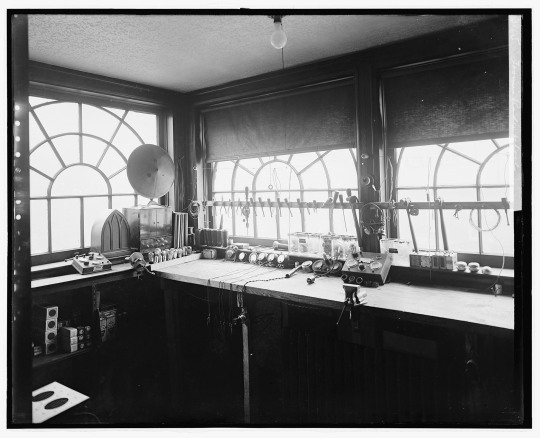
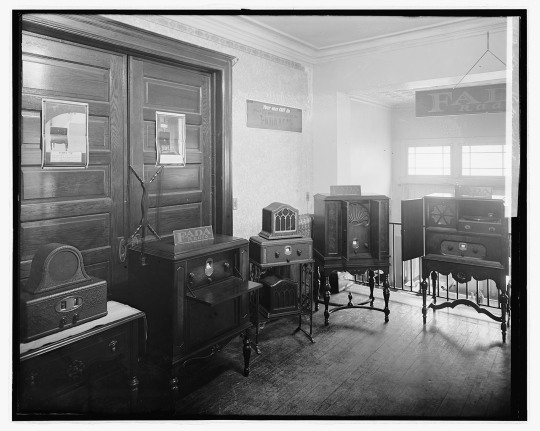
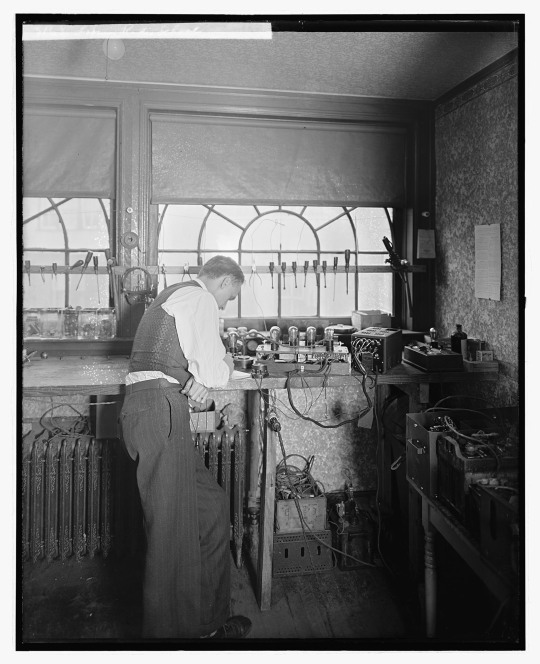
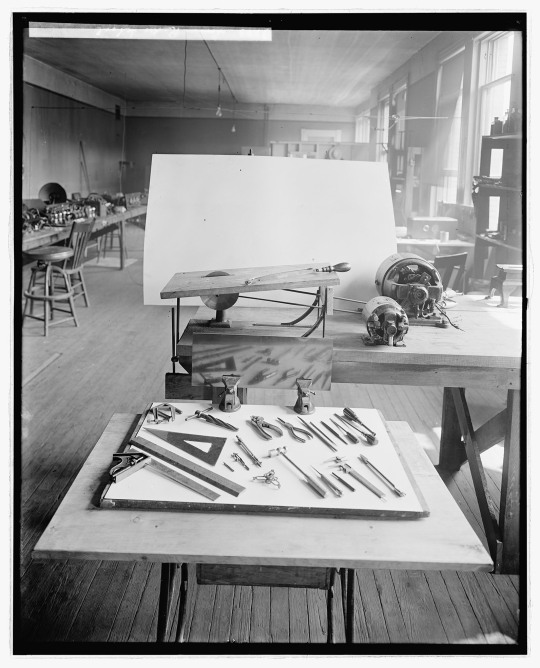

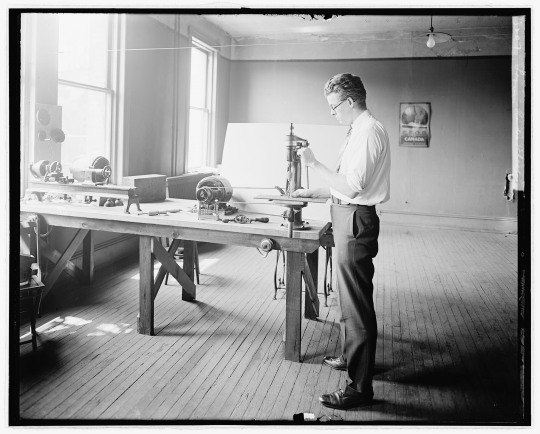
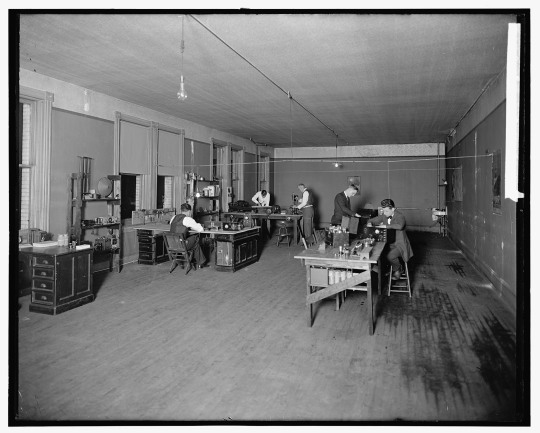
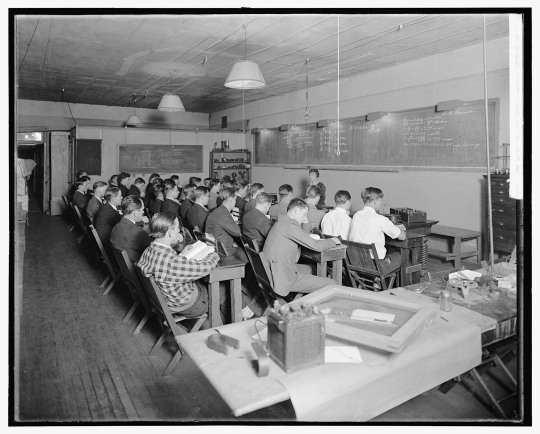
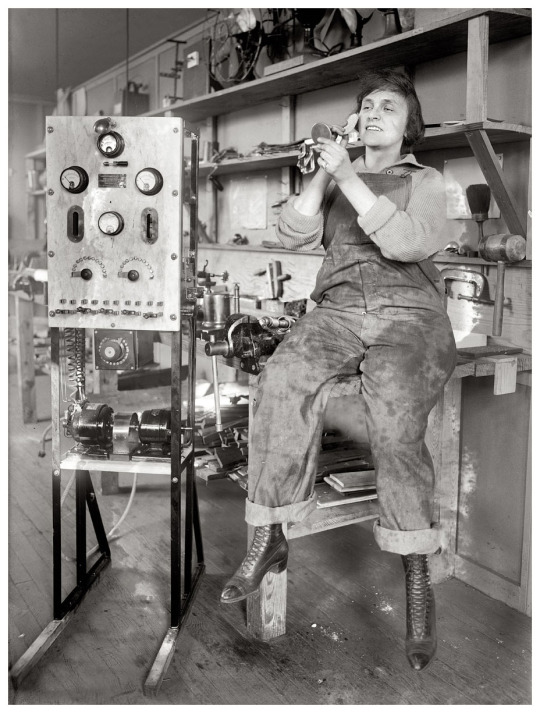
The Loomis Radio School, Washington D.C. ca. 1921.
The school was located at 401 Ninth St. N.W. and operated with the call letters 3YA. By 1920 it was offering a six month course enabling the graduate to obtain a first grade commercial radio license and by January of 1922 was offering a four year course with a degree in Radio Engineering bestowed on graduates.
The school was founded by Mary Texanna Loomis, pictured in the last photo.
Born August 18, 1880 near Goliad, Texas. She was the second child born to Alvin Isaac and Caroline (Dryer) Loomis. Though born on homestead in Texas in 1880, by 1883 her parents had returned to Rochester NY and then on to Buffalo where Alvin became president of a large delivery and storage company. Little is known of her early years, but appears she had a fairly middle-class up bringing. She seemed well schooled, with an early interest in music and language (she mastered French, German and Italian) Her early years were spent in Buffalo, NY and she later relocated to Virginia.
During the early years of World War I, she became interested in the new field of wireless telegraphy. There was a family precedent; her cousin, Dr. Mahlon Loomis, had conducted early wireless experiments with moderate success and may in fact have been the first person, in 1865, to send and receive wireless signals.
Mary soon became proficient enough in wireless telegraphy to be granted a license by the United States Department of Commerce. Thoroughly fascinated with the field now called “radio”, she decided to turn her expertise into a career. Also, she wanted to do something that would honor her pioneering ancestor. Her idea was to do this by founding a radio school.
Though radio was indeed, for many years, a profession dominated by men, Mary Loomis around age 40 took no notice and in 1920 founded the Loomis Radio School in Washington, D.C. and it quickly gained an excellent reputation. Ms. Loomis set high standards for the school and it attracted students not only from the United States but Europe and Asia as well. Loomis enjoyed teaching as much as she enjoyed radio itself. In an interview, she said, “Really, I am so infatuated with my work that I delight in spending from 12 to 15 hours a day at it. My whole heart and soul are in this radio school.”
As president and Lecturer of the Loomis Radio School, Mary authored a definitive book on radio, named “Radio Theory and Operating.”
By January 1922 the school was offering a four year course with a degree in Radio Engineering bestowed on graduates. Loomis also intended that her students understand more than just the inner and outer workings of radio. In addition to a radio laboratory (with equipment constructed almost entirely by Mary herself), the school maintained a complete shop capable of teaching carpentry, drafting and basic electricity. She reasoned that many of her graduates might find themselves at sea, or in other challenging situations and she wanted them adequately prepared. “No man,” Ms. Loomis said, at the time, “can graduate from my school until he learns how to make any part of the apparatus. I give him a blueprint of what I want him to do and tell him to go into the shop and keep hammering away until the job is completed.”
The school appears to have been in existence at least through the early 1930's, but it has not been possible to find information after that.
In an interview given to H.O. Bishop of the Dearborn Independent in 1921, Mary was asked: “What sort of young men are taking up the radio profession?” to which she replied:
“The Kind who have grit and want to get there! Virtually all of them are ambitious and enthusiastic over the possibility of visiting every nook and corner of the world. My students are not only enrolled from various sections of the USA and Canada but from many foreign countries, such as Sweden, Ireland, England, Poland, Russia, Austria, Rumania and the Philippines. One of the brightest pupils I ever had was Prince Walimuhomed of Far-away Afghanistan. He was an extremely modest young man, keeping his real identity a secret until after graduating. He said he had no idea of earning his living by working at radio, but just wanted to know all about it. He does.You have no idea how much happiness I get out of the success of each individual graduate. My boys keep in touch with me from all parts of the world. Scarcely a day goes by that I do not get some trinket or postcard from some remote section of the world. I have made the wonderful discovery that the only way for me to get happiness for myself is to make some one else happy. I find that I am making these young men happy by teaching them every phase of the radio business so that they can earn a comfortable living for themselves and their dependents and at the same time, see the great big beautiful world.
As far as we can figure out, Mary Loomis left Washington D.C. around 1935 and moved to San Francisco where she worked as a stenographer. She died in 1960 and is interred at Woodlawn Memorial Park, Colma, CA.
Source
144 notes
·
View notes
Text

#OnThisDay in 1928, “The Dodge Victory Hour,” one of radio's first variety shows, debuted on NBC. The show starred Will Rogers, Paul Whiteman and his orchestra, Fred Stone and Al Jolson.
11 notes
·
View notes
Text
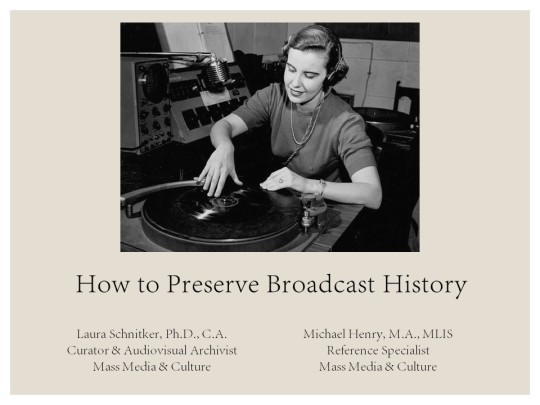
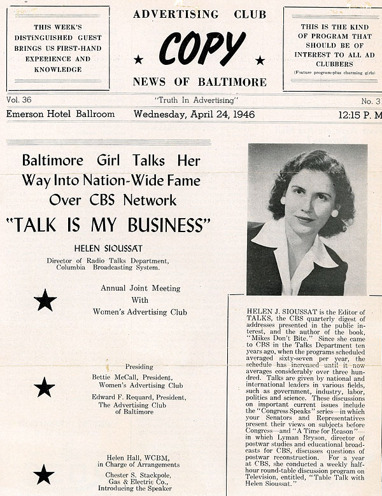

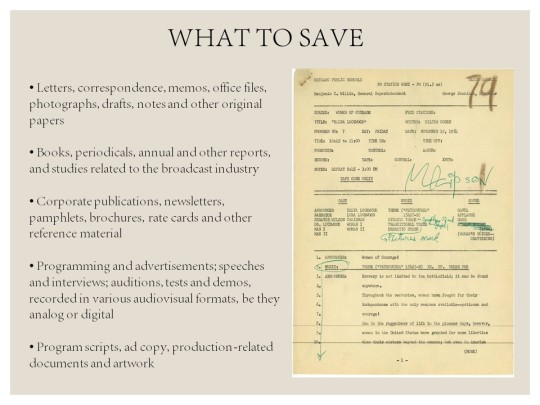
WHY BROADCAST ARCHIVES?
Most of broadcast history is lost because most stations and networks make no attempt to preserve it. Significant portions of our materials were pulled from dumpsters. Others were saved by individuals with careers in broadcasting.
Hearing the voices or seeing the images of the past humanizes history. These records provide a treasure trove of primary research to historians of all backgrounds.
3 notes
·
View notes
Text
"Rhythm and blues was too good to remain a black secret for long and as the fifties dawned, certain musically adventurous white DJs started to add it to their playlists. By 1956 a quarter of the best-selling US records would be by black singers. This move was accelerated by the dramatic commercial success of some of the new black stations, exemplified by WDAI in Memphis - since 1948 the first black-owned radio station - which, as well as being home of DJs BB King and Rufus Thomas (he of the 'Funky Chicken'), was extremely profitable.
In adopting this subversive music, white DJs also started adopting black slang. This 'broadcast blackface', as Nelson George calls it, let them speak (and advertise) to both the black community and younger whites. Dewey Phillips of Memphis's WHBG was so successful at integrating his audience that the wily Sam Phillips of Sun Records chose him to broadcast Elvis Presley's first single.
The idea of the 'white negro' was still born of racism, however. George recounts the amazing tale of Vernon Winslow, a former university design teacher with a deep knowledge of jazz, who was denied a radio announcing job on New Orleans' WJMR simply because he was black. After what seemed like a successful interview, Winslow, who was quite light-skinned, was asked, 'By the way, are you a nigger?' Denied an on-air job merely because of his race, Winslow was hired for a most extraordinary job. He was to train a white DJ to sound black. Winslow had to feed a white colleague - now christened Poppa Stoppa - with the latest local slang, teaching him to say things like 'Look at the gold tooth, Ruth' and 'Wham bam, thank you ma'am'. The show became a smash. One night, frustrated by his behind-the-scenes existence, Winslow snuck a turn at the mic. He was fired immediately. WJMR kept the Poppa Stoppa name and continued using a white man, Clarence Hamman, to provide Poppa's voice. (Winslow had his revenge, though, as Doctor Daddy-O on New Orleans' WEZZ where he would become one of the country's top ten DJs.)"
- excerpt from Last Night a DJ Saved My Life by Bill Brewster and Frank Broughton
#black american history#dj history#dj tag#music history#radio history#racism#new orleans history#black music history#vernon winslow#book im reading right now
10 notes
·
View notes
Text

World Radio History— an amazing website with hundreds of pdf's on everything you'd ever want to know about radio and television.
The material on the website are out of print and hard to finds books, archived so everyone can learn about the history of radio and television.
61 notes
·
View notes
Text
The Ancient Shadow: The first villain origin
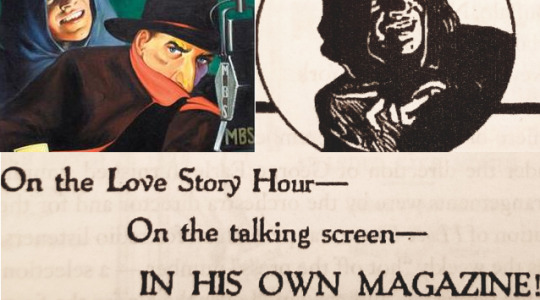
I… am the Shadow! Conscience is a taskmaster no crook can escape. It is a jeering shadow even in the blackest lives. [sinister laugh] The Shadow knows…. And you too shall know, if you listen as Street & Smith’s Detective Story Magazine relates for you the story of… The House of Death.
So a while back, I did this post where I talked about what influences went into The Shadow as a character, primarily those that Walter Gibson brought when he was assigned with turning a radio voice into a crimefighting pulp character. If you’re familiar enough with The Shadow, you’re probably aware of the story behind his creation: that the character first began life as a narrator for Street & Smith’s magazines, and eventually his captivating persona far overshadowed said magazines in popularity to the point people kept asking for a Shadow Magazine that didn’t exist, and so they had to make one and the rest is history. You may also be aware that The Shadow was among the first multimedia sensations and that the pulp magazine Shadow, and the radio Shadow, had major differences, but were still more or less the same character.
But what was The Hooded Shadow like? What do we know about the very first iteration of the character?
“When I came onto the show, The Shadow was a series of dramatic crime programs solved by different detectives every week. The role of The Shadow on that program was to introduce it and act as something of a narrator. Then, once he had done his opening lines, he was practically finished on the program until the very end of the show, when he came back with ‘The weed of crime bears bitter fruit. Crime does not pay. The Shadow knows.’ ”
“The Shadow was originally the voice of conscience, and it was through the fear which he aroused in the minds of criminals that they exposed their own villainy or destroyed themselves.” - Bill Johnstone
We know that the main image associated with this version of the character, the bare-faced grinning man with a dark robe and pointing finger, was based on photographs of James la Curto wearing a hood, and that around Frank Readick’s tenure, he switched over to the slouch hat and cape, and when James La Curto had to briefly replace Readick in 1934, he took new publicity stills with the hat and cape, and the hood had been phased out completely by that point.
(Although, in The Shadow Scrapbook, Gibson remarks that the cloak had a particular mystique of it’s own that made it fit Mobsmen on the Spot, where The Shadow completed a major battle against organized crime, and he remarked it was suitable for scenes where The Shadow would visit the Sanctum and privately read reports of his agents, which sparks the idea that The Shadow does use the cloak in the Sanctum in private. Which is an interesting idea, considering the role the Sanctum plays in these stories and the psychological component it has).
We know that he was a distant ancestor of a character we collectively know today as “The Horror Host”. The main reason I wouldn’t call him the first is because he wasn’t narrating horror stories outright, the character narrated whatever Street & Smith had to sell (including horror stories), but The Shadow kickstarted the shift in radio that would allow for proper Horror Hosts to start arriving.
Radio shows has had hosts from the inception of the medium, but they purported to be the listener’s friend. The Shadow was almost the listeners’ enemy. He was neither friendly nor smooth. He was sinister. He whispered, laughed brutally, and ended each episode with harsh reminders like “Conscience is a taskmaster no crook can escape! The Shadow Knows!”
The sinister, mysterious Shadow, so unlike the previous warm, jovial radio hosts, was popular enough with listeners that other radio show hosts began to imitate The Shadow, becoming all-knowing, eerie characters, like the Hermit (from The Hermit’s Cave), the Whistler and most memorably Raymond (from Inner Sanctum) and The Mysterious Traveler. In time this character - all-knowing, sardonic and sinister - spread across media and became a stock character archetype - Jess Nevins, on a essay written for Incognito

Again the Shadow… Ha, ha… Weird, fantastic shape—He is silently watching—life and death—they march under his piercing gaze. What chance has mere man? Ha, ha… The Shadow knows...
-Frank Readick’s first words in the role
Back then, Street & Smith capitalized on The Shadow’s mystery by going to great lengths to pretend that the character was a real person, something they kept up even as he transionited to pulp magazine crimefighter. We know that much of the character’s staying power came not just from the concept, but from Frank Readick’s performance.
They put a mask on him, dressed him in a long black hooded cape, and brought him up the service elevator at Columbia to give him mysti-glamour. Nobody ‘knew’ who The Shadow was, and that mumbo-jumbo was continued for a long, long time
“Our director, Bill Sweets, was unhappy with La Curto’s portrayal as the narrator, and Readick was moved out of the regular cast to portray The Shadow in the next show… I still remember that night because I hoped I might get a shot at the role, which would have meant a regular weekly assignment at $25 a show, good money during the Depression.
I was waiting for my chance to read for the role when Frank Readick did his version, and I knew nobody else was going to be playing that role. They wanted the quality that Readick gave it, and I recognized it the moment I heard him do it. They wanted a special quality that created a kind of suspense, and had an odd unusual quality that was not like the other actors. Readick gave The Shadow’s lines a spooky interpretation that was exactly what the director was looking for - Dick Osgood
The Shadow was originally the host of Detective Story Hour, but the program was eventually shut down due to poor sales, as listeners were confused and far more interesting in asking for a “Shadow Magazine” that didn’t exist. Although several of the early pulps alluded to the idea that The Shadow made appearences in radio as his garbed self, most people assume that the radio narrator ceased to exist by the time the pulp Shadow started rising in prominence, which isn’t true.

As The Shadow continued to be the narrator of Street & Smith’s radio programs for several years, although not in a consistent fashion as many of the programs kept getting cancelled.Circa 1931-32, The Shadow hosted two other shows: Blue Coal Radio Revue, where he narrated detective stories and appeared in the musical interlude, and Love Story Hour, where he hosted dramatized stories from Street & Smith’s Love Story Magazine. Unfortunately, no recordings of The Shadow reading shlocky romance stories in his spooky fashion exist.
Part of the reason why The Shadow kept getting cancelled and switched over to less gruesome programming was because the character had succeeded in giving off the impression of being a horrible villain, enough to cause nightmares. Apparently this is why “Crime does not pay!” was adopted into The Shadow’s catchphrase repertoire, as essentially an attempt to soften and rehabilitate The Shadow’s image:
One newspaper claimed that Street & Smith had canceled the show in the face of parents groups’ complaints that their children insisted on staying up at night to listen to The Shadow - and then suffered nightmares.
Some accounts of these days claimed that The Shadow was presented as a “super-crook.” He was later described as “a cloaked crook turned crime fighter.”
When NBC brought back The Shadow on October 1, 1934, Frank Readick once more stood before the carbon filter microphone. By this time, he was nationally recognized as possessing “the most horrible laugh on the air”.
One important change was made to clean up The Shadow’s evil reputation. This time the nasty tone of his voice was ameliorated by his constant scolding of listeners that “Crime does not pay.” Each episode ended with The Shadow speaking in a code familiar only to readers of the magazine. Key words in a long speech were emphasized by The Shadow—spelling out anti-crime messages such as “Lawbreakers always lose” and “Crime must go.”
This new approach, along with The Shadow’s crime-busting pulp activities, mollified critics. - The Shadow: Master of Mystery, by Will Murray
Master of Mystery states also that, according to records at this time, The Shadow’s radio theme was not Omphale’s Spinning Wheel, as it would be during the 1937 radio program, but in fact, Paul Dukas’ The Sorcerer’s Apprentice, the music that you all probably know from Disney’s Fantasia. I don’t know what to make of that fact, that this was The Shadow’s first ever theme, but I’m gonna make something of it still.
Circa 1935, there was a 26-episode radio series based on the pulp version of The Shadow, the first time the pulp Shadow specifically was adapted to the radio waves. No transcripts or recordings of this exist, and it’s unknown how faithful they were to the pulps. Apparently Gibson did write a couple of scripts for it, only one of which exists, with this as the opening:
EFFECT: Weird whine. Laugh.
VOICE: I am The Shadow. (Laugh). My hand reaches out above the underworld, to pluck men of evil from their lairs and hurl them to their doom. Crooks tremble at sight of my spectral figure. They fall before the thunder of my mighty weapons. (Laugh). But men of crime heed my warning. I bring death to those who deal in evil. I am The Shadow… (Laugh).
EFFECT: Whine, buzzing of wireless key with fading, trailing laugh. Cymbals.
At the middle of the decade, disputes arose between Street & Smith and the sponsor Blue Coal, as S&S wanted to adapt the currently-thriving Shadow pulp stories to radio, and Blue Coal didn’t want to tamper with one of their main sensations.
Readers of The Shadow said, ‘Why don’t you have the real Shadow on the air,’ and so forth. (S&S) told these people flatly that they could not have The Shadow unless they used our characters and took it directly from the magazine, because at that time, all Street & Smith wanted to get out of it was plugs for the magazine. They thought that was worth letting the other people have the show.
So these people capitulated, and, so help me, they said they would run it for one year so that Street & Smith, after they saw it wouldn’t work out, would let them have The Shadow as an announcer again.
So anyhow they went ahead with it, and instead of not going, it proved to be a sensation - Walter Gibson
And thus the radio show with Orson Welles was born, and with it, no more traces of The Hooded Shadow remained. No
It’s kinda funny that this is where “super crook turned crimefighter” first erupted as a potential origin story for The Shadow, decades before the movie and comics would graft it to the character’s backstory, another mystery of The Shadow that begins as it ends, much like Lamont Cranston turned out to be Kent Allard who turned out to be Lamont Cranston. An erroneous speculative bit of trivia planted way, way back in the beginnings of the character sat for decades until it ended up becoming true, or at least, widely believed enough that it was part of the character’s mass media image, and one that fans took issue with in rather pointed fashion.
Too many people look upon The Shadow as a ghost or a villain. Some think he is a master criminal. Only those who read his exploits know he is ‘the master crime fighter extraordinary.’ Why not do more advertising? Show the people who The Shadow is meant to be.
Show them that he is to be looked up to, not scowled and scorned upon. And last, but not least, if The Shadow ever goes on the radio again, please tell them to put The Shadow in the stories, not just talking in between.
Put his agents in the story, too. I hear you did this about three years ago.
Why not again? - NYU fan Jake Maloney, in a letter printed in a 1936 Shadow Magazine issue

Ha, ha, ha… The Shadow leaves the air… but beware… The Shadow is always near… He cannot be destroyed… You cannot see him but he sees all… Wherever you may be… On land or on sea… Remember…
The Shadow is not far away… Ha, ha, ha…
-The Shadow’s farewell message, used on the last episode of the 1933 Blue Coal Radio Revue and Mystery Program
#the shadow#pulp heroes#pulp fiction#shadow magazine#shadow radio#the hooded shadow#radio#radio history
42 notes
·
View notes
Text
The simplest of the three major experiments is known in brief as 'facsimile.' It is an extension, in effect, of the process by which a photograph of a bomber fallen over London is ‘cabled’ or ‘wirelessed’ to the AP Building, Rockefeller Center, New York, and is relayed to newspapers all over the United States. Facsimile proposes, most dramatically, to send you a photograph of a daily paper; it will be printed, so to speak, in and by your receiver during the night. In the morning, you will have it at hand. The stylus which ‘writes’ the copy may make as many as a hundred strokes for one inch of the facsimile newspaper; so the process is still slow, and the ‘newspaper’ you receive may be rather smaller than the one you buy at a news stand. This is not, however, inherent in the method.
-- Radio for the Future, Gilbert Seldes, The Atlantic, 1941
(Radiofax newspapers were briefly a thing and fizzled not because they didn't work but because most people didn't want to buy a $$ appliance to print a smaller newspaper. Radiofax in general was almost entirely displaced by television (had its beginnings at the same time), telefax/regular fax (telegraph faxing hugely pre-dated radiofax, radiofax was new and exciting because it was wireless, and then telephone faxing is the ubiquitous "fax" of today), and the internet, though it's used to this day for some stuff like maritime weather, so the more you know.)
#as (ha) telegraphed. more radio historyposting for the new year.#will be tagged so you can avoid it if you're not interested in radio history lmao#radio#radio history#radio for the future gilbert seldes#1941#edited because i forgot to include. like. regular fax. in the little list#which actually predates radiofax if you're talking about teleGRAPH faxing!#and then radiofax is new and exciting because it's wireless#but television is becoming a thing around the same time#and then telePHONE faxing is the ubiquitous fax machines of the 1980s to today
3 notes
·
View notes
Text
Fun Fact: As the Titanic sank, (just over 112 years ago) initial calls for help were with an outdated distress call; ‘CQD’. It wasn’t until much later in the night that they settled on the brand-new and world famous ‘SOS’ (which doesn’t actually stand for anything btw).
Check out this fantastic video for more about what operators Phillips and Bride were doing that fateful night: https://youtu.be/FxRN2nP_9dA?si=Z17CW1G09SunWaSf
youtube
73, see you next time!
0 notes
Text
Too many missing episodes! Recover the archive!
0 notes
Text


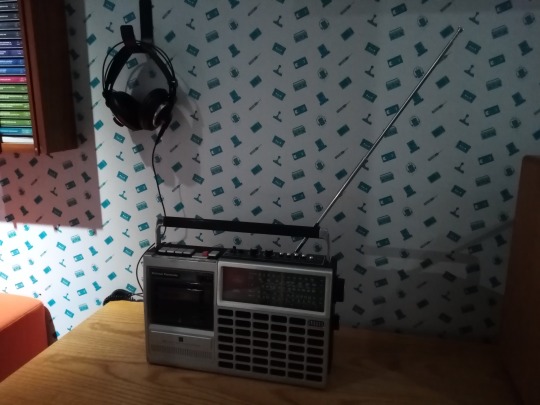
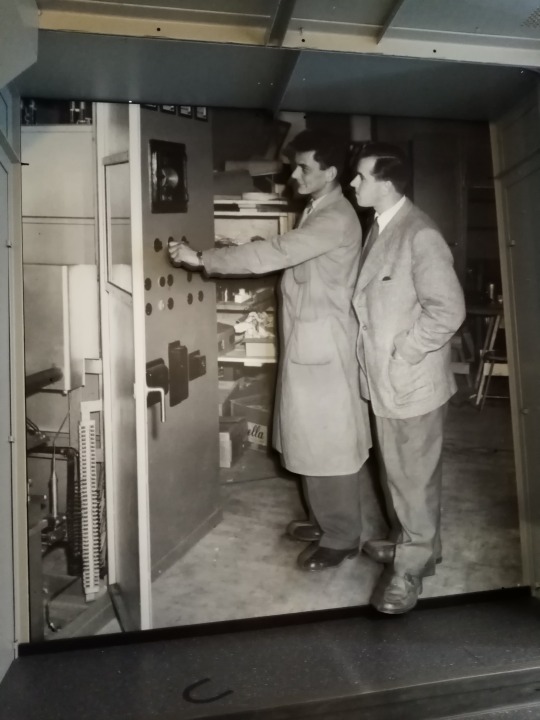



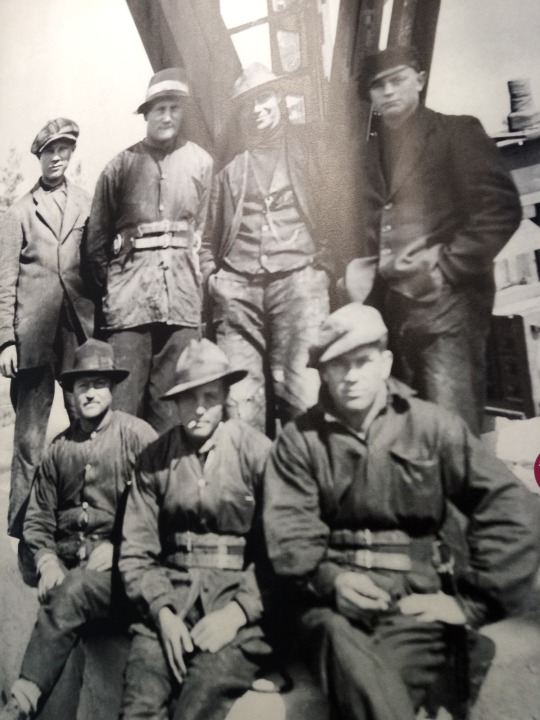
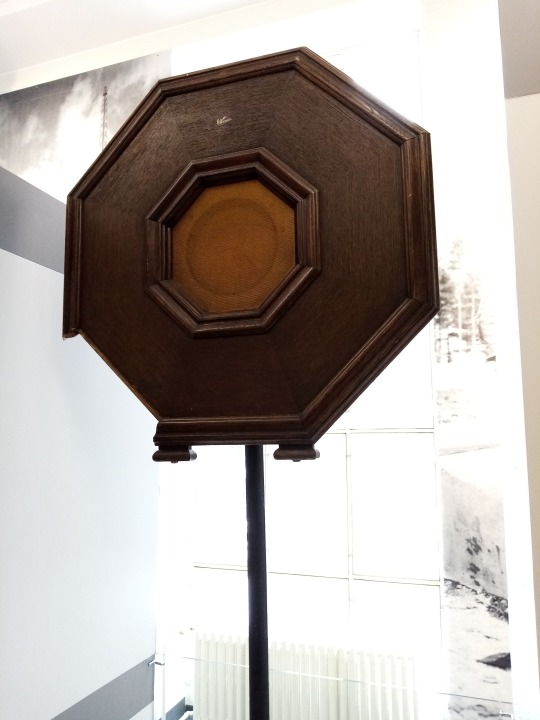
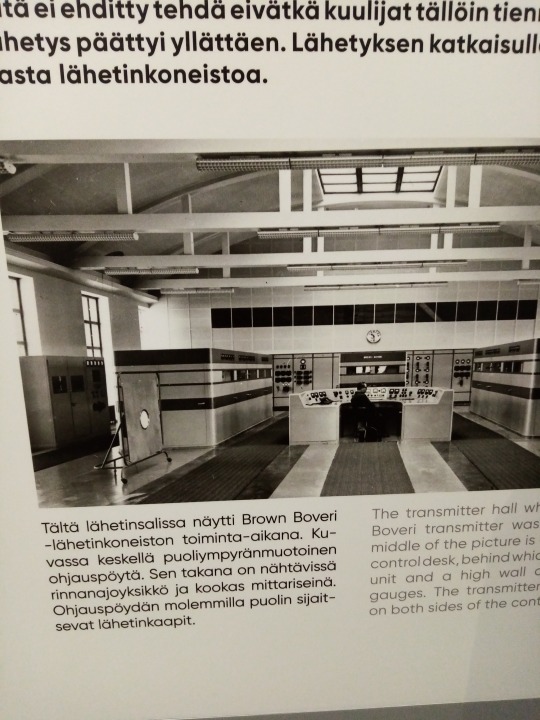


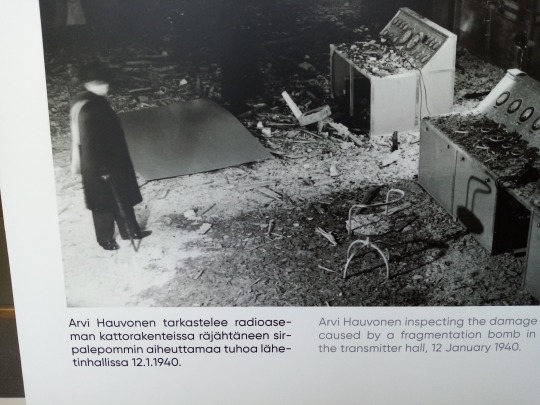
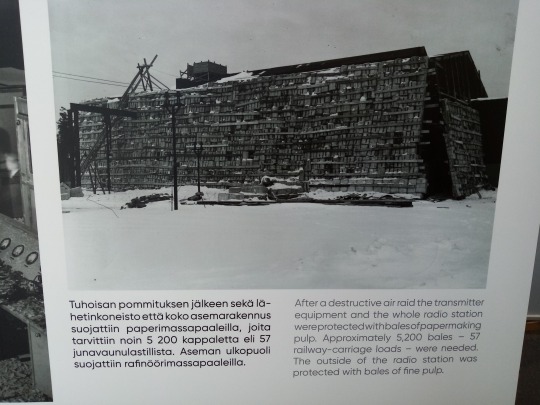
Radio- ja tv-museo Mastola, Lahti, 2022
#radio#radio history#museum#museum photography#my photography#my photos#photography#old radio#finland#madge's
1 note
·
View note
Text
The Origin Story of HAM: The First Amateur Wireless Station Call in 1908
"Uncover the fascinating history behind the word 'HAM' - the first amateur wireless station call in 1908! #amateurradio #wirelesstechnology"
The word “HAM” has an interesting origin story in the world of amateur radio. In 1908, a group of amateurs from the Harvard Radio Club, consisting of Albert S. Hyman, Bob Almy, and Poogie Murray, set up the first amateur wireless station. Initially, they called their station “Hyman-Almy-Murray,” which was quite a mouthful. They needed something shorter, snappier, and more memorable.
It was…

View On WordPress
#1908#Albert S. Hyman#amateur radio#Bob Almy#HAM#Harvard Radio Club#origin story.#Poogie Murray#radio history#station call#wireless technology
0 notes
Text

13K notes
·
View notes
Photo
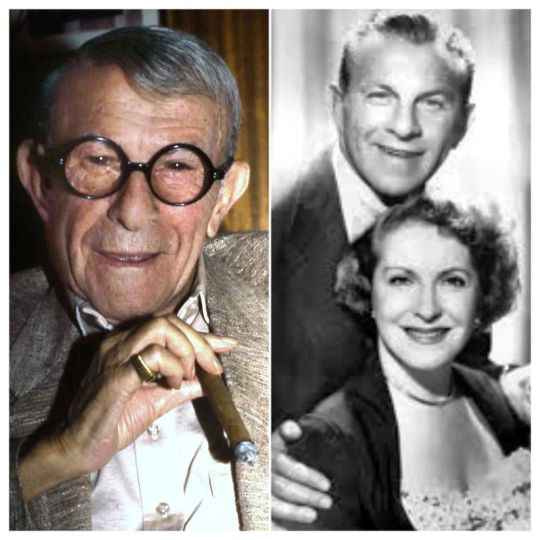
On This Day in New York City History January 20, 1896: Beloved comedian George Burns is born Nathan Birnbaum (January 20, 1896 – March 9, 1996) in New York City to Polish immigrants.
Burns' career started in vaudeville and continued through radio, TV and film. Burns with his wife Gracie Allen were one of the first successful husband and wife duos in media starring in radio and TV shows Burns and Allen and the George Burns and Gracie Allen Show (1950-1958.) Gracie would retire in 1958 and pass away in 1964. Burns through himself in his work, focusing on other TV projects, as well as, theater and stand up.
Burns' career had a Renaissance at the age of 79 when he won the Academy Award for Best Supporting Actor in the 1975 film The Sunshine Boys. He would continue to play up his now loveable and impish character in such films as the Oh God! Series and 18 Again. During his illustrious career Burns won an Emmy, a Grammy, and an Oscar.
Burns lived to the age of 100, passing away on March 9, 1996.
#GeorgeBurns #NathanBirnbaum #BurnsAndAllen #GeorgeBurnsAndGracieAllenShow #CinematicHistory #VaudevilleHistory #RadioHistory #TelevisionHistory #TVHistory #MovieHistory #TheatreHistory #JewishHistory #NewYorkHistory #NYHistory #NYCHistory #History #Historia #Histoire #Geschichte #HistorySisco
https://www.instagram.com/p/Cno0GtbOXE8/?igshid=NGJjMDIxMWI=
#George burns#Nathan Birnbaum#Burns and Allen#George Burns and Gracie Allen Show#Cinematic History#Vaudeville History#Radio History#Television History#TV History#Movie History#Theatre History#Jewish History#New York History#NY History#NYC history#History#Historia#Histoire#Geschichte#HistorySisco
0 notes
Text
youtube
The first radio Christmas in 1922
@The1920sChannel
#video #essay #otr #radiohistory #radioflomm
0 notes
Text

via @finty2bai on twitter
#hazbin hotel#appleradio#radioapple#alastor#lucifer#apple radio#radio apple#this is my favorite thing in the history of forever#fanart
1K notes
·
View notes
Text
Radio: Taylor Swift currently has 19 of the top 40 songs on the Billboard Top …
GPS: At the next light, make a slight right turn
Radio: …for the first time since 1894
Me: Well, that can’t be right …
*googles*
So…Billboard magazine started on November 1, 1894 in Cincinnati (I live in Cincinnati so that’s exciting to me)! I have not found confirmation that there was a hot 100 list then though …and considering it focused on all entertainment billboards, not specifically music, I don’t think I will
0 notes